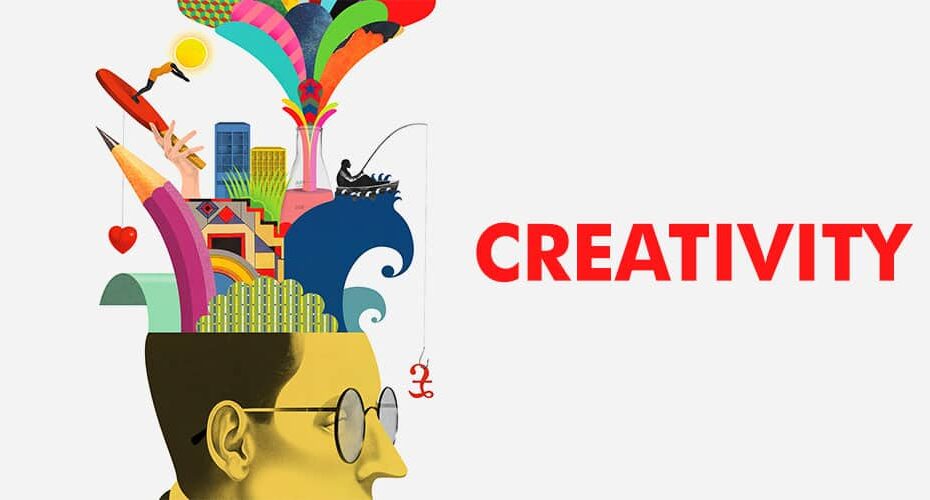Can Creativity Be Learned?
Most Employers, Especially In Tech Jobs, Want To Hire Creative Employees. Consciously Or Unconsciously, They Look For Signs Of Creativity In Candidates In Resumes And Interviews.
They want to see what new ways applicants have already used in their businesses to provide products or services or solve problems. Therefore, a job applicant should be able to refer to aspects of his thinking or creative action in his diary and interview. He should be able to familiarize himself with the field of the company or organization for which he has applied for a job and offers suggestions in that field creatively.

How to become more creative?
Dare or truth…
– Dare or truth?
– He said: Courage.
He looked at the phone screen and read aloud: “Go to the window and shout as loud as you can: You and I, we are all crazy!”
It was around midnight, and to think that at that hour, in a complex where more than a hundred families live, someone yelling at the window that you and I are crazy was crazy. But our friend said that I would do it. We all thought he was joking. But he immediately went to the window, put his hand on the sill, and cried loudly, “You and I, we are all mad.”
All three of us protested that you should have opened the window and shouted; This is not acceptable. You said to go to the window and cry. I also shouted. But our friend calmly asked where did he write or who said that I should have opened the window and called.
Although we all knew that meant shouting through the open window, our friend was right.
We couldn’t protest legally, according to the language rules or the rules of the game, and our friend saved himself and us from a predicament with a bit of Creativity.
Perhaps more suitable examples of Creativity can be mentioned. Still, by saying this memory, I just wanted to point out something that is the essence of the concept of Creativity: presence, attention to detail, and seeing things that others do not see or assume to be known. Before Fleming, people had seen food go moldy for thousands of years, but he was the one who looked into it and dared to challenge assumptions.
It is how the apple falls from the tree. It was not the first apple to fall from a tree, but Newton was probably the first to put a why at the beginning of the sentence “the apple fell from the tree” and go to the answer. Of course, just asking a question does not lead to Creativity. Questioning is the beginning of invention.
Both Fleming and Newton were outstanding masters in their fields. In other words, we cannot just ask a question from a lot and then dive into the world of Creativity. You must have gone through the preparations in your field to be able to present remarkable Creativity. Its Creativity originates from awareness and, at the same time, is self-aware.
Is it learnable?
Many prominent researchers have given a positive answer to this question. They believe that humans are born creative, but gradually as they grow, they lose a large part of their ability to be creative. It is enough to pay attention to children under five years old. They have no intention of ruining their favorite toy. If you buy them a toy they want, it might not even last a day.
Things and events are new for children, and as I said in the previous note, newness and novelty are two of the foundations of Creativity. Children carefully look at details; They ask questions. They want to figure out what is under this body, how that screw holds the legs, and. these are signs of Creativity. Anyone who has spent a day with a young child knows that there are dozens of questions to answer. But, most adults lose these features.
George Land, a systems theorist and thinker devised a test to identify creative scientists and engineers at NASA in the 1960s.
This test worked so well that he later used it to detect Creativity in 3-5 years old and then administered the same test to the same children at ten years old and later at 15 years old, with surprising results. T
The relationship between age and Creativity in children that Land tested is as follows:
- Effects of 5-year-old children: 98 percent creative
- Results of 10-year-old children: 30% creative
- Results of 15-year-old teenagers: 12% creative
- The results of the same test on 280,000 adults: 2 percent creative
George Land concluded from this test that uncreative behavior is learned over time. In other words, we have the capacity and signs of Creativity in our childhood, but gradually we learn to become uncreative. In other words, the invention has an inverse relationship with age.
From his point of view, during the last two hundred years and the industrial revolution, educational institutions, laws and regulations, and general rules in factories and offices have caused most people to listen to orders and stop being creative.
A clear example of such a situation is depicted in Charlie Chaplin’s “New Age” movie, where humans have become tools that tighten only one screw, and no creativity is involved.
The foundations of Creativity
As I said before, Creativity – regardless of the natural Creativity instilled in children – is based on concepts. In other words, to be creative, these concepts must be used. The main ideas that are tied to Creativity are:
- Mastery of a specific discipline; Knowledge is the basis of the invention.
- Learning to connect, without which no creativity is sustainable.
- Learning a way of thinking, including creative, analytical, and critical thinking.
- Experience, exploration, and imagination to question what we take for granted.
- Combining information and ideas, which leads to new ideas and initiatives.
DNA of innovators…
Clayton M. Christensen, the famous and outstanding business writer, and his colleagues, Jeff Dyer and Hal Gregersen, in their favorite book: The Innovator’s DNA: Mastering the Five Skills of Disruptive Innovators, after interviewing 5000 innovative people and Creative people, achieved exciting results in different fields, from employers and entrepreneurs to engineers and employees.
We can mention Steve Jobs, Jeff Bezos, and Pierre Omidyar among these innovative people. They concluded that specific behavioral patterns in these people are constantly repeated.
People’s ability to create, innovate, and present innovative ideas are dependent odeon Pendl’s skills and function. According to this theory, you can be the most creative and innovative person in business, science, or any other field only if you have these five behaviors called the “DNA of innovators.”
- You are associating: drawing connections between questions, problems, and ideas in different contexts.
- Questioning: Asking questions that challenge common sense (questions assumed data).
- Observing: scrutinizing the behavior of others, including customers, suppliers, and competitors, to identify new ways of doing things.
- Networking: establishing communication and interaction with people with different ideas and views.
- Experimenting: creating interactive experiences, eliciting non-traditional responses, and observing emerging results and insights.
- This theory emphasizes the behaviors we can do rather than the characteristics.
“Presence” and Creativity…
Most employers, especially in tech jobs, want to hire creative employees. Consciously or unconsciously, they look for signs of Creativity in candidates in resumes and interviews. They want to see what new ways applicants have already used in their businesses to provide products or services or solve problems. Therefore, a job applicant should be able to refer to aspects of his thinking or creative action in his diary and interview.
He should be able to familiarize himself with the field of the company or organization for which he has applied for a job and offers suggestions in that field creatively. The ability to be creative is essential for companies and organizations that value it; Otherwise, there is no place for Creativity in organizations that say yes.
But what may not be mentioned in many sources related to Creativity is “presence.” Presence means the presence of mind and sharpness of senses. I can say with high confidence that presence is necessary for Creativity and success in any other work and relationship.
To draw a line of communication between unrelated phenomena, to have an accurate observation and ask basic questions based on it, for effective communication and interaction with others in the direction of networking and experience, and testing, presence is essential. Being present means being aware of every moment that passes and everything that happens.
Most of us are used to doing things while our mind is elsewhere.
No effective two-way communication is formed if we are not present in the relationship with all our senses. You cannot have a negotiation with a client or manager or even your colleague if you are not present in the moment. The other side of the relationship will detect any fake presence instantly. Our body language and facial muscle movements expose us, which means the natural end of a relationship.
Do you know why 98% of children are creative and only 2% of adults? The answer should be sought in presence. Children are present in most of their work. Just watch a child playing for a few minutes.
Six dongs is his attention to the game. Children also imagine, but their imagination is in the direction of building and Creativity. In a matter of seconds, under the dining table, they build a house with several rooms and a kitchen and make rules on how to live in this house. They fantasize and do not fantasize. They don’t drown in the regret of the past and don’t have anxiety about the future; They are present, so 98% of them are creative.











